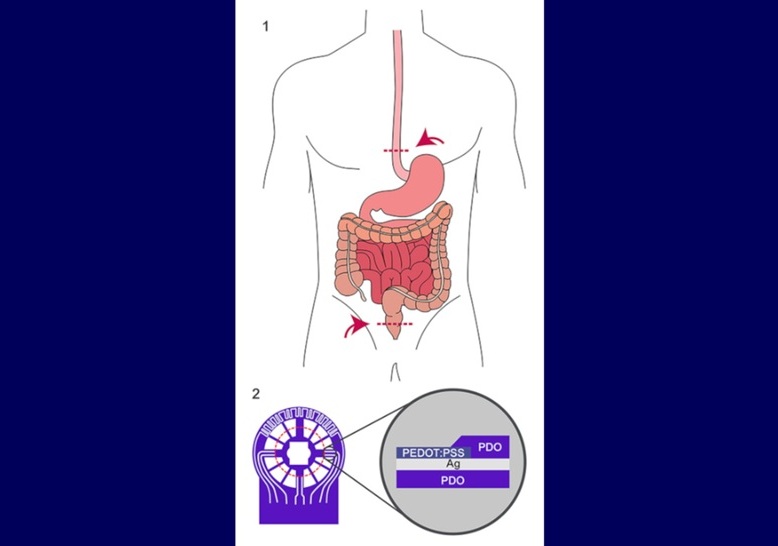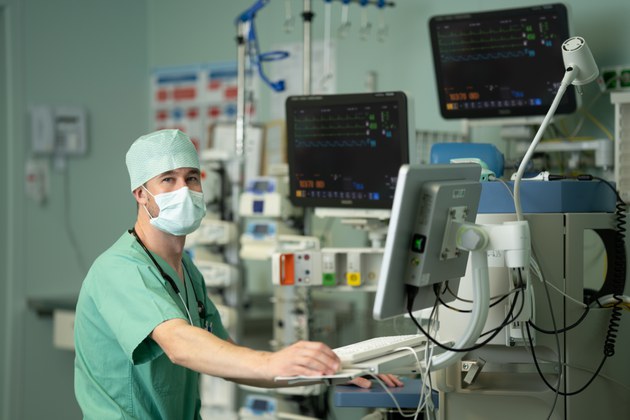Auricular Stimulation Reduces Cardiac Postoperative AF Risk
|
By HospiMedica International staff writers Posted on 06 Nov 2019 |
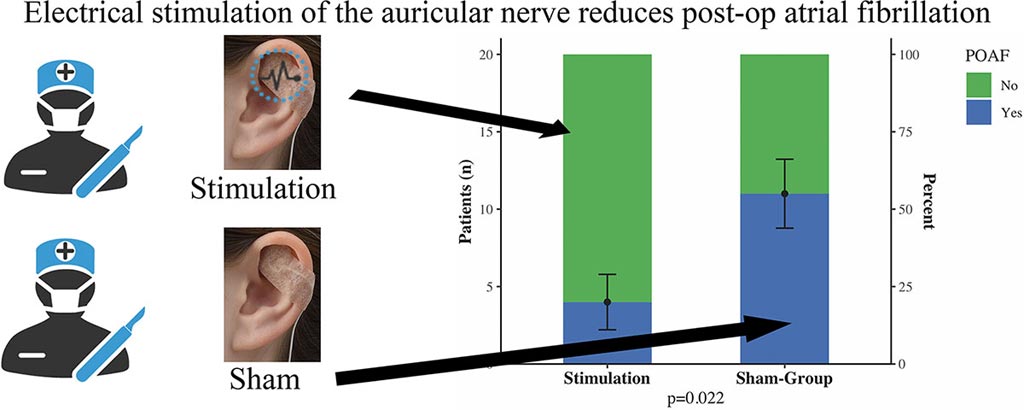
Image: Graphical abstract of the study (Photo courtesy of Martin Andreas / MedUniWien).
A new study reveals that postoperative atrial fibrillation (POAF) complications could be halved by non-invasive electrical stimulation of the vagus nerve directly on the ear.
Researchers at the Medical University of Vienna (MedUniWien; Austria) conducted a randomized 1:1 study to examine the antiarrhythmic and anti-inflammatory effects of noninvasive low-level transcutaneous electrical stimulation (LLTS) of the greater auricular nerve in 40 patients slated for cardiac surgery. Following surgery, electrical stimulation electrodes were applied in the triangular fossa of the ear for up to two weeks. Heart rhythm was recorded continuously via Holter electrocardiogram (ECG), and C-reactive protein (CRP) and interleukin-6 plasma concentrations were measured.
The results revealed that the patients receiving LLTS (amplitude one mA, frequency 1 Hz for 40 minutes, followed by a 20 minutes break) had a significantly reduced occurrence of POAF (4 of 20 events) when compared with the control group (11 of 20 events) during a similar mean Holter ECG recording period. The median duration of POAF was comparable between the treatment and the control group, and no effect of the LLTS application on CRP or IL-6 levels was detectable. The study was published on October 10, 2019, in Circulation: Arrhythmia and Electrophysiology.
“Electrical stimulation of the ear and the vagus nerve that sits on the surface there has a calming effect, in that we are stimulating the largest nerve of the parasympathetic nervous system and hence the corresponding antagonists,” said lead author Martin Andreas, MD, PhD, of the department of surgery. “This stimulation is given continuously in the first five days after an operation, when the risk of POAF is at its highest, and is then stopped, if everything goes well. The innovative product, from an Austrian company from Mauerbach, has already been successfully used for vascular occlusions.”
POAF occurs in up to 40% of patients undergoing cardiac surgery. Conventional viewpoints suggest that it is less likely to affect the survival of patients when compared with chronic AF, although it does slightly prolong the duration of hospital stay. However, newer reports suggest that POAF is also associated with a significantly higher incidence of various complications, including cardiovascular events, renal failure, infection, and cerebral infarction.
Related Links:
Medical University of Vienna
Researchers at the Medical University of Vienna (MedUniWien; Austria) conducted a randomized 1:1 study to examine the antiarrhythmic and anti-inflammatory effects of noninvasive low-level transcutaneous electrical stimulation (LLTS) of the greater auricular nerve in 40 patients slated for cardiac surgery. Following surgery, electrical stimulation electrodes were applied in the triangular fossa of the ear for up to two weeks. Heart rhythm was recorded continuously via Holter electrocardiogram (ECG), and C-reactive protein (CRP) and interleukin-6 plasma concentrations were measured.
The results revealed that the patients receiving LLTS (amplitude one mA, frequency 1 Hz for 40 minutes, followed by a 20 minutes break) had a significantly reduced occurrence of POAF (4 of 20 events) when compared with the control group (11 of 20 events) during a similar mean Holter ECG recording period. The median duration of POAF was comparable between the treatment and the control group, and no effect of the LLTS application on CRP or IL-6 levels was detectable. The study was published on October 10, 2019, in Circulation: Arrhythmia and Electrophysiology.
“Electrical stimulation of the ear and the vagus nerve that sits on the surface there has a calming effect, in that we are stimulating the largest nerve of the parasympathetic nervous system and hence the corresponding antagonists,” said lead author Martin Andreas, MD, PhD, of the department of surgery. “This stimulation is given continuously in the first five days after an operation, when the risk of POAF is at its highest, and is then stopped, if everything goes well. The innovative product, from an Austrian company from Mauerbach, has already been successfully used for vascular occlusions.”
POAF occurs in up to 40% of patients undergoing cardiac surgery. Conventional viewpoints suggest that it is less likely to affect the survival of patients when compared with chronic AF, although it does slightly prolong the duration of hospital stay. However, newer reports suggest that POAF is also associated with a significantly higher incidence of various complications, including cardiovascular events, renal failure, infection, and cerebral infarction.
Related Links:
Medical University of Vienna
Latest Critical Care News
- E-Tattoos Harvest Energy and Monitor Health in Real Time
- Focused Ultrasound Tricks Tumors into Marking Themselves for Destruction
- World's Smallest Programmable Robot Opens Up New Possibilities in Medicine
- Remote Ventilate View Platform Enables Real-Time Monitoring of Patient-Ventilator Asynchrony
- Soft “Cyborg” Cardiac Patches Improve Stem Cell Heart Repair
- Soft Wearable System Offers Continuous Wireless Monitoring of Neonatal Health
- AI-Enhanced Wearables Could Transform Type 2 Diabetes and Prediabetes Care
- Breathable Electronic Skin Paves Way for Next-Generation Wearable Devices
- AI Transforming Colon Cancer Diagnosis
- Ventricular Assist Device Offers Long-Term Use in Children Waiting for Donor Heart
- Precision Approach Improves Immunotherapy Effectiveness for ICU Patients with Sepsis
- Soft Robots Could Donate Their Heart to Humans
- Bioadhesive Strategy Prevents Fibrosis Around Device Implants on Peripheral Nerves
- Miniature Non-Invasive Robotic Catheters to Improve Infertility Treatments
- Stick-On Patch Monitors Baby's Movements In Utero
- EEG-Based AI Technology Accurately Diagnoses Alzheimer’s and Dementia
Channels
Surgical Techniques
view channel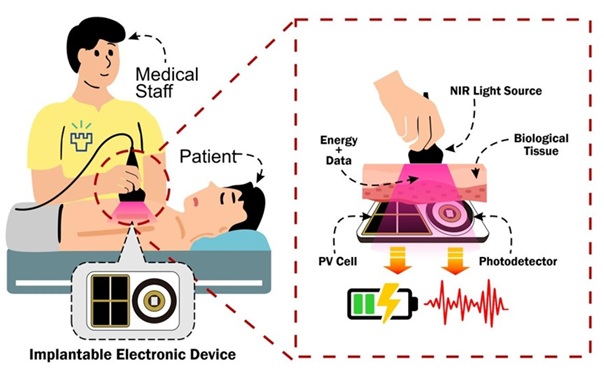
NIR Light Enables Powering and Communicating with Implantable Medical Devices
Implantable medical devices rely on wireless communication and long-lasting power sources to function safely inside the body, yet existing radio-based methods raise concerns around security, interference,... Read more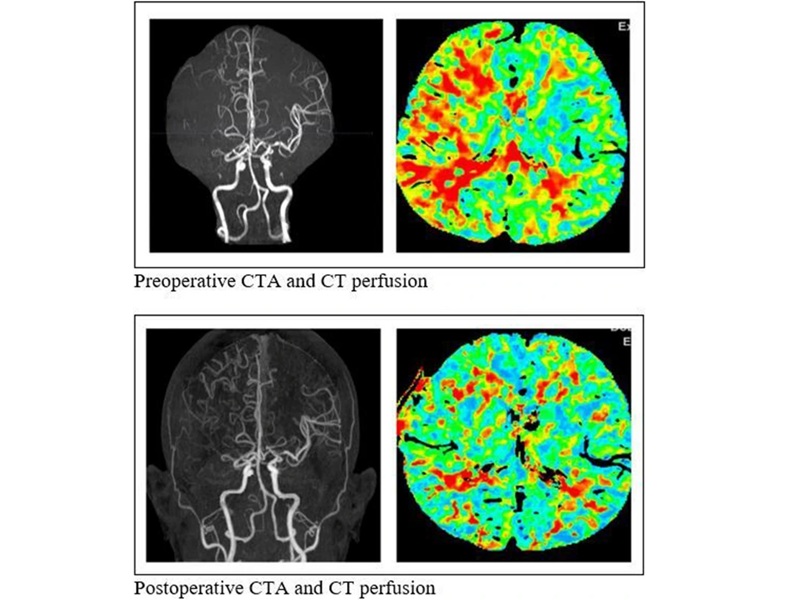
Simple Bypass Protocol Improves Outcomes in Chronic Cerebral Occlusion
Chronic cerebral arterial occlusion and moyamoya disease are major causes of ischemic stroke, particularly in regions where access to advanced diagnostic tools is limited. Assessing cerebral blood flow... Read morePatient Care
view channel
Revolutionary Automatic IV-Line Flushing Device to Enhance Infusion Care
More than 80% of in-hospital patients receive intravenous (IV) therapy. Every dose of IV medicine delivered in a small volume (<250 mL) infusion bag should be followed by subsequent flushing to ensure... Read more
VR Training Tool Combats Contamination of Portable Medical Equipment
Healthcare-associated infections (HAIs) impact one in every 31 patients, cause nearly 100,000 deaths each year, and cost USD 28.4 billion in direct medical expenses. Notably, up to 75% of these infections... Read more
Portable Biosensor Platform to Reduce Hospital-Acquired Infections
Approximately 4 million patients in the European Union acquire healthcare-associated infections (HAIs) or nosocomial infections each year, with around 37,000 deaths directly resulting from these infections,... Read moreFirst-Of-Its-Kind Portable Germicidal Light Technology Disinfects High-Touch Clinical Surfaces in Seconds
Reducing healthcare-acquired infections (HAIs) remains a pressing issue within global healthcare systems. In the United States alone, 1.7 million patients contract HAIs annually, leading to approximately... Read moreHealth IT
view channel
EMR-Based Tool Predicts Graft Failure After Kidney Transplant
Kidney transplantation offers patients with end-stage kidney disease longer survival and better quality of life than dialysis, yet graft failure remains a major challenge. Although a successful transplant... Read more
Printable Molecule-Selective Nanoparticles Enable Mass Production of Wearable Biosensors
The future of medicine is likely to focus on the personalization of healthcare—understanding exactly what an individual requires and delivering the appropriate combination of nutrients, metabolites, and... Read moreBusiness
view channel
Philips and Masimo Partner to Advance Patient Monitoring Measurement Technologies
Royal Philips (Amsterdam, Netherlands) and Masimo (Irvine, California, USA) have renewed their multi-year strategic collaboration, combining Philips’ expertise in patient monitoring with Masimo’s noninvasive... Read more
B. Braun Acquires Digital Microsurgery Company True Digital Surgery
The high-end microsurgery market in neurosurgery, spine, and ENT is undergoing a significant transformation. Traditional analog microscopes are giving way to digital exoscopes, which provide improved visualization,... Read more
CMEF 2025 to Promote Holistic and High-Quality Development of Medical and Health Industry
The 92nd China International Medical Equipment Fair (CMEF 2025) Autumn Exhibition is scheduled to be held from September 26 to 29 at the China Import and Export Fair Complex (Canton Fair Complex) in Guangzhou.... Read more












